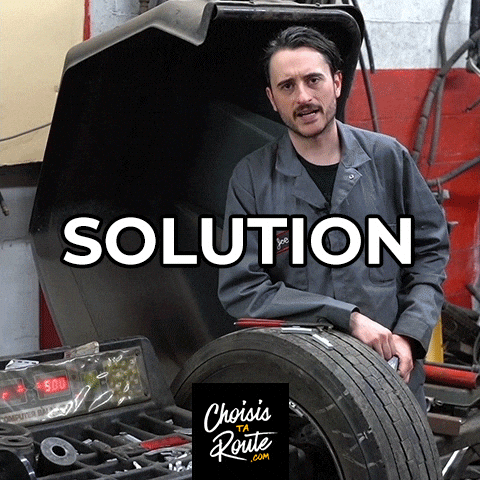By: Dr Gaby Wolferink ![]() @drgabywolferink
@drgabywolferink
The Tree

Imagine I was moaning to someone about the massive tree in my back garden blocking out the summer sunshine from my home and garden. ‘Really need to do something about that….’ And I’ve been saying that for a few years now, while the tree gets bigger and bigger. We all know how things like that go…
The person I was moaning to has had enough of me moaning, and one day comes by with a surprise: A CHAINSAW!
“There you go”, they say, “problem solved! Use this chainsaw to cut down the tree or at least some of the big branches!”, and, muttered under their breath ‘and then please stop moaning…‘
I look at the chainsaw, then at the tree, and then back at the chainsaw, and think ‘oh dear…‘
The tree IS massive. And that chainsaw is quite heavy and scary. And, really, should I be using that? Or, well, technically what I meant was that I’d need to ring someone, like a professional. A tree surgeon for example, to come and solve my problem, as well, me using a chainsaw.. Really? And adding to that, it’s raining a bit now, and my arm is still a bit sore from weights training, so I’ll put it in the shed for now…
A chainsaw is a tool, a heavy tool, not to be wielded lightly. It’s not a solution; giving me a chainsaw is not going to solve my problems for at least three reasons:
- I don’t have the knowledge to use it
- I don’t have the confidence to use it
- I don’t have the OTHER tools needed to use it, safely and effectively
So… the chainsaw will sit there in the garage, (probably forever). My friend wasted their money and the tree still blocks my sun. Still, I daren’t moan about it anymore when meeting with that friend because they’d simply say ‘…well, I gave you a chainsaw…!’ On top of that I’d have to admit my lack of knowledge, confidence, the fact I’m not investing in other tools (decent ladder, any safety kit perhaps..). The only problem that got solved was me moaning about a tree, not the actual tree and it blocking out the sun.
Digital Tools, not Solutions

I see the same happening with Digital Tools in housing associations (and it happens in other sectors as well, probably).
Digital Transformation is at the forefront of every single housing association I’m checking out/applying for/interviewing with at the moment. And rightfully so. Every day someone somewhere thinks of something new, starts developing a new application, device, website or data management system. Most of them will fail, some of them will change our lives forever.
If the Covid Pandemic has shown us anything, it is that we need to embrace these failures and successes in order to get better at working more agile, more digital, and more flexible with that. It has also, hopefully, taught us that just giving people a tablet or a phone or a laptop, or making a web-application ‘responsive’ isn’t a solution; it’s providing people with tools that need to be used correctly, with confidence and often in tandem with other tools in order to solve any (part of a) problem.
The Interview

In one of my recent interviews, when it was my turn to ask questions, I asked the panel to tell me three things relating to their actions and findings over the last 3 months:
- Name one thing that when we went into lockdown that you had sorted already and were really pleased about?
- What was one thing that you had to really work hard on to sort out, but got sorted in the end?
- What is one thing that still requires a lot of work and attention going forward, with organisations likely to encourage home working for the foreseeable future?
I was very pleased with the answers (and heartbroken that in the end I didn’t get the job), especially with answer number 3. Their answer showed me that the crisis had highlighted to them that it is not just about providing people with tools. Their answers, in short were:
- They already had quite an agile supportive set-up for the staff that were used to it; they had moved with the times and didn’t need to worry about the people who were used to not just working behind their desk in the office.
- With not just a part but instead EVERYONE moving to agile working, the provisions they had needed to be scaled up. This wasn’t just about providing normally office-based people with physical equipment. It also meant making sure their infrastructure could deal with many more meetings and conversations happening online via Teams and other methods. It was a challenge, but they did it. They are now fully agile/remote functioning and plan to stay that way to make best use of resources for their homes and tenants.
- You can provide everyone with all the physical and digital tools you can get your hands on, but one thing you can’t just buy and implement is the people part of it. You can’t buy confidence, knowledge and experience in a package deal to patch-upload into your employees and expect them to get on with it. It’s a whole cultural shift that needs a lot of attention, and some people need more attention and support than others to be able to walk along with you on this strange, but somewhat exciting journey that came from a dreadful situation
But, you mentioned DATA chainsaw massacre…?

Whatever digital tools you use, whether it’s hardware or software, they are a way to input, manage, and manipulate the data you use to run your organisation financially, sustainably and socially. If there are members of staff that don’t feel comfortable with the ‘solution’ handed to them, it could be detrimental to your data integrity, and with that your services and entire business.
So, if you think you have handed them ‘the solution’, but the tablets and laptops stay in desk drawers because they are too bulky, too scary or too much hassle to use ‘out and about’, your data is at serious risk. They might feel daft asking for more training and practice, embarrassed because it ‘should be so easy’.
Equally, if people do try to use them but in the incorrect way, they risk losing valuable information themselves to be able to do their jobs correctly, which in turn has an effect on the tenant.
Tools have a tendency to not work in isolation. Whether that’s a chisel without a hammer, a hammer without a nail, or a chainsaw without the confidence and physical strength to wield it. The same is true for your organisation; whether it’s about hardware, software or the knowledge, mindset, and confidence to work with the previous two in the correct way.
When the interviewer said that they were working hard to get that knowledge, confidence and mindset adjusted to what they wanted the more tangible tools to achieve, I knew I was talking to an organisation that was going in the right direction. An organisation that realised that it’s digital tools, not solutions. I knew I was talking to the kind of organisation I’d like to work for.
Tools don’t make the professional

Sometimes it’s best to leave things to professionals. Even though you might have access to the same physical tools they have. I will not be cutting back or down that tree in my garden on my own. I will pay a professional to do it in my stead. Why? I know that if I would try it, there would be a significant risk I’d not only hurt myself. I might hurt other people and buildings as well; although I’d ask them to stay clear before I’d get chopping, obviously.
The difference between me and that professional are that they have had adequate training and hours and hours of practice in handling that chainsaw. They didn’t just receive a chainsaw from a friend (although, who knows, it might have started out like that!). Instead, they have all the other bits and bobs needed to make the cutting down or back of trees a success with minimal risk to others.
If you decide to invest in providing people with digital tools to help your organisation provide better services, you have to make sure those tools aren’t just handed over with minimal instruction and an open invite to ‘come and find us if you have any questions’. Make sure you choose and set them up in a way that also make your staff’s work easier and not more difficult. That will keep them from using it, meaning your investment is not just void, but even detrimental to your service.
Make sure you have one correct way of doing things. Provide one clear expectation of entering and working with data. Provide not just one-off but continuous training to make sure that tools and skills align. This also makes sure that training is for everyone and nobody feels ‘less’ than someone else for asking for more help or explanation.
And, let’s not forget, people might think they know how to use it, but they might not realise they actually don’t. Providing training for everyone means you have more control over the impact you want your digital tools to have.
Provide the correct frameworks, training and support materials to help your staff understand what you expect of them. Show them that if they put in the effort of learning how to use it can make their lives easier. Otherwise, that tree might come crashing down on not just your own house, but also those of your tenants.



